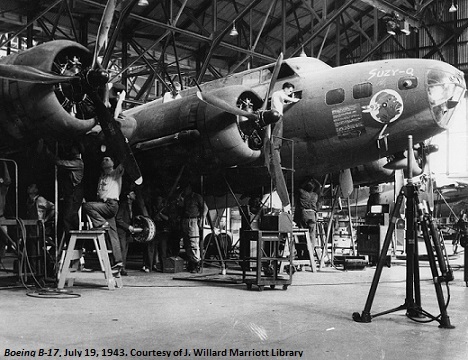Dublin Core
Title
Description
Hill Air Force Base is Utah’s sixth largest employer and military spending creates over $9 billion in economic activity for the State. Learn about the historic roots of Utah’s “Military Industrial Complex.”
When US President Dwight Eisenhower gave his farewell speech in 1961, he did more than say goodbye to his fellow Americans. The old Army General used the opportunity to caution them of the “unwarranted influence” of the military and growing arms industry on the US economy. He worried that, if left unchecked, politicians would become too reliant on military contracts to stimulate the economy and create jobs.
What Eisenhower called the “Military Industrial Complex” has deep roots in the state of Utah. During the Depression, Utah was so desperate for federal aid that one Federal Emergency Relief agent called it the “prize ‘gimme state.” The US government pumped resources into Utah through the Works Progress Administration, the Civilian Conservation Corps, and other work relief programs before breaking ground on Hill Air Field in the lead up to World War II.
The US government created jobs by staffing Hill Field with local clerical workers, as well as mechanics that could take care of engines, radios, and airplanes. By July 1944, Hill Field had mobilized 3,000 military personnel and 10,000 civilians in the war effort, and was by far the largest employer in the state. Off the base, the construction and transportation industries boomed as they built homes around and provided buses to the base. The Korean War prompted another increase in defense-related jobs, and by 1963, in the midst of the Cold War, Utah’s defense industry employed 26,000 people and accounted for 8 percent of the state’s income.
In addition, there were contracts between the federal government and private companies for military activities, such as development of the Minuteman missile. As just one example, the Thiokol Chemical Corporation built an $11 million facility adjacent to Hill Field and went from employing less than 100 people in 1957 to over 4,000 by 1960. Meanwhile, Utah’s educational institutions supplied a steady stream of skilled mechanics, engineers, and scientists to work in these defense-related jobs. It seems – in Utah at least – that President Eisenhower’s warnings about the “Military Industrial Complex” were completely ignored.
Creator
Source
_______________
See Richard White, "It's Your Misfortune and None of My Own": A History of the American West, Norman: University of Oklahoma Press, 1991; Leonard J. Arrington, Thomas G. Alexander, and Eugene A. Erb, Jr., “Utah’s Biggest Business: Ogden Air Material Area at Hill Air Force Base, 1939-1965,” Utah Historical Quarterly 33, no. 1 (1965); Utah Department of Workforce Services, “Utah’s Largest Employers,” accessed May 2015, https://jobs.utah.gov/wi/pubs/em/annual/current/lrgstemp.pdf Jasen Lee, “Defense industry plays big role in Utah economy, study shows,” Deseret News, May 9, 2017.

